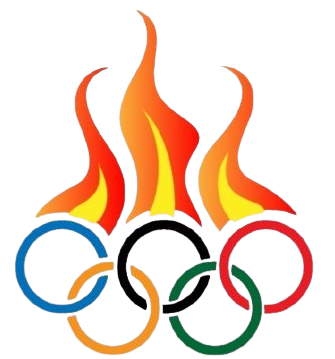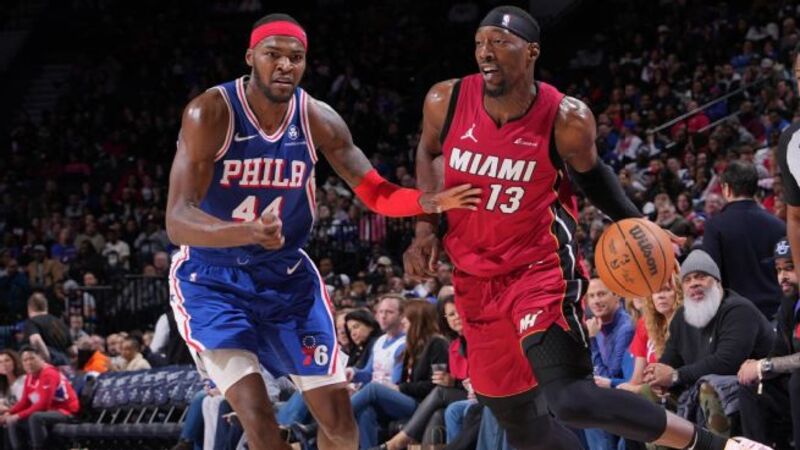The latest matchup between the Miami Heat and the Philadelphia 76ers was one of the most anticipated games of the season. Both teams, known for their physical defense and strategic gameplay, entered the contest with playoff implications on the line. The Heat came in looking to solidify their standing in the Eastern Conference, while the 76ers were eager to showcase their depth and maintain momentum despite some injuries.
The game lived up to expectations, delivering intense back-and-forth action, highlight-reel plays, and a display of elite basketball IQ from both sides. The Miami Heat’s defensive identity clashed with Philadelphia’s offensive power, creating a compelling contest filled with adjustments, counterattacks, and standout performances.
1. Stakes & Significance (Regular Season, Playoff, Rivalry)
This wasn’t just another regular-season game — it carried the energy of a postseason battle. The Heat and 76ers have a budding rivalry rooted in recent playoff meetings, with both organizations respecting yet fiercely competing against one another.
For Miami, the game was about proving that its balanced roster can keep pace with the Eastern powerhouses. For Philadelphia, it was about asserting dominance, particularly after recent lineup changes and Joel Embiid’s return to form following injury.
Venue & Date
The game took place at the Kaseya Center in Miami, Florida, on a packed Friday night. Fans filled the arena early, anticipating a clash of Eastern Conference contenders. The atmosphere was electric, with both fan bases passionately engaged from tip-off to the final buzzer.
2. Team Performance Summary
Final Score & Game Flow
The Miami Heat edged out the Philadelphia 76ers in a nail-biting finish, winning 108–104. The game saw multiple lead changes, with neither team able to gain more than a 10-point advantage at any point.
The Heat relied on their discipline, three-point shooting, and late-game composure to seal the victory, while the 76ers leaned heavily on Joel Embiid’s inside scoring and Tyrese Maxey’s explosive drives.
Quarter-by-Quarter Breakdown
-
1st Quarter: The 76ers started strong, pushing the pace and finding success in transition. Maxey scored 10 points early, helping Philadelphia lead 30–24.
-
2nd Quarter: Miami’s bench responded with efficient shooting, cutting the deficit. A 12–2 run fueled by Duncan Robinson’s threes gave the Heat a 52–51 halftime lead.
-
3rd Quarter: The Heat’s defense tightened, forcing turnovers and holding Embiid to just six points in the quarter. Miami led 81–75 heading into the fourth.
-
4th Quarter: Philadelphia fought back, tying the game at 99–99 with two minutes left. However, Jimmy Butler’s clutch mid-range jumper and Bam Adebayo’s late free throws secured the win.
Team Shooting & Efficiency Overview
-
Miami Heat: Shot 47% from the field and 38% from three-point range.
-
Philadelphia 76ers: Shot 45% overall but only 31% from deep.
Miami also won the turnover battle 10–14 and had 24 assists compared to Philadelphia’s 19.
3. Miami Heat Player Stats
3.1 Scoring Leaders & Contributions
Jimmy Butler led the Heat with 28 points, showing his trademark ability to control tempo and deliver in key moments. Tyler Herro added 22 points, including several timely three-pointers. Bam Adebayo contributed 18 points and 11 rebounds, asserting himself on both ends.
3.2 Rebounds & Second-Chance Points
Miami collected 45 rebounds, compared to Philadelphia’s 42. Adebayo led the charge with 11 boards, while Caleb Martin and Haywood Highsmith provided hustle plays that created second-chance opportunities. The Heat scored 14 second-chance points, a crucial factor in such a close game.
3.3 Assists, Playmaking & Ball Movement
Kyle Lowry orchestrated the offense with 9 assists, using his veteran presence to control the pace. Herro added 5 assists, showing improved vision in pick-and-roll sets. Miami’s off-ball movement and screens opened several good looks from midrange and deep.
3.4 Defense: Blocks, Steals, Defensive Rating
Adebayo anchored the defense with 3 blocks, while Butler and Highsmith combined for 5 steals. Miami’s ability to switch defensively without mismatches limited Philadelphia’s perimeter penetration. Their defensive rating for the game was 106.3, a testament to their disciplined rotations.
3.5 Efficiency & Plus/Minus Figures
-
Butler: +9 (FG 10/18)
-
Adebayo: +7 (FG 7/13)
-
Herro: +5 (FG 8/16, 4/9 from 3)
-
Lowry: +6 (9 assists, 2 turnovers)
Miami’s starters maintained positive plus/minus differentials, demonstrating strong team cohesion.
4. Philadelphia 76ers Player Stats
4.1 Top Scorers & Offensive Impact
Joel Embiid dominated offensively with 34 points, including 14 free throws, while Tyrese Maxey added 27 points on efficient 10-of-19 shooting. Tobias Harris chipped in 16 points, but Philadelphia struggled to generate consistent scoring outside of its stars.
4.2 Rebounding & Interior Presence
Embiid controlled the paint with 13 rebounds, but the rest of the team provided minimal support. Miami’s collective rebounding effort neutralized Philadelphia’s size advantage. The Sixers secured only 8 offensive boards, below their season average.
4.3 Playmaking & Assist Distribution
Without a true point guard, Philadelphia’s offense occasionally stagnated. Maxey led the team with 6 assists, while Harris added 3. The Sixers relied heavily on isolation sets for Embiid, resulting in fewer assisted field goals.
4.4 Defensive Impact: Steals, Blocks, Defensive Metrics
Paul Reed and Kelly Oubre Jr. brought defensive energy off the bench, combining for 3 steals and 2 blocks. However, rotations were inconsistent, and late help defense allowed Miami to score repeatedly in the midrange.
4.5 Efficiency & Plus/Minus Figures
-
Embiid: +4 (FG 9/20, FT 14/15)
-
Maxey: +3 (FG 10/19, 3/7 from deep)
-
Harris: -5 (FG 6/15)
Bench players struggled to maintain efficiency, with limited scoring production outside the starters.
5. Key Matchups & Player Battles
Star Player Head-to-Head: Heat’s Stars vs 76ers’ All-Stars
The spotlight was on Jimmy Butler vs Joel Embiid — two leaders known for elevating their teams in crunch time. Butler’s all-around play and late-game heroics slightly outshone Embiid’s dominant yet isolated scoring.
While Embiid had the statistical edge in points, Butler’s leadership, shot creation, and defense against switches proved more impactful in securing the win.
Role Players Making a Difference
Duncan Robinson’s perimeter shooting and Caleb Martin’s hustle plays swung momentum multiple times for Miami. On the 76ers’ side, Kelly Oubre Jr. provided energy and defense, but inconsistent offense limited his overall influence.
Bench vs Bench Contributions
Miami’s bench outscored Philadelphia’s 28–19. Kevin Love contributed valuable rebounds and spacing, while Josh Richardson’s defense disrupted Maxey’s rhythm when he rested. The Heat’s depth was a deciding factor late in the game.
6. Advanced Metrics & Analytics
Player Efficiency Rating (PER) Comparison
-
Butler: 26.5
-
Adebayo: 23.1
-
Embiid: 28.0
-
Maxey: 22.3
-
Herro: 21.7
While Embiid posted the highest PER, the Heat’s balanced distribution across multiple players reflected their cohesive team play.
Usage Rate & True Shooting Percentage
-
Embiid: 37% usage, 61% TS
-
Butler: 31% usage, 64% TS
-
Herro: 27% usage, 60% TS
-
Maxey: 29% usage, 58% TS
Miami’s offensive structure allowed them to maintain efficiency even with multiple ball handlers sharing touches.
Offensive & Defensive Ratings
-
Miami Heat: OffRtg 112.5 | DefRtg 106.3
-
Philadelphia 76ers: OffRtg 109.8 | DefRtg 111.6
Miami’s slightly superior defensive rating and lower turnover rate gave them the edge in the closing moments.
Net Rating & Impact Metrics
The Heat’s +6.2 Net Rating reflected superior clutch performance and ball movement. The 76ers demonstrated strong isolation scoring but struggled to maintain flow in team-oriented possessions.
7. Momentum Shifts & Statistical Turning Points
Runs & Hot Stretches
Philadelphia opened with a 10–0 run behind Maxey’s aggressive drives, but Miami countered with a 14–2 stretch in the second quarter. The Heat’s ability to respond to momentum swings kept them in control.
Who Made the Difference in Pivotal Quarters?
The third quarter belonged to Bam Adebayo, who scored 10 points and grabbed 6 rebounds. His defense forced Embiid into two turnovers that led to fast-break points for Miami.
Big Plays & “Clutch” Minutes
In the final two minutes, Jimmy Butler hit a fadeaway jumper over Tobias Harris and drew a key foul that put Miami ahead for good. Kyle Lowry’s late steal sealed the victory as the 76ers tried to mount a final comeback.
8. Observations & Takeaways
What the Numbers Suggest About Each Team’s Strengths & Weaknesses
-
Miami Heat Strengths: Ball movement, defensive cohesion, and execution in clutch moments.
-
Weaknesses: Occasional offensive droughts and reliance on Butler’s isolation scoring.
-
Philadelphia 76ers Strengths: Dominant interior presence and free-throw generation through Embiid.
-
Weaknesses: Limited bench production, over-reliance on individual creation, and defensive lapses in rotation.
Who Exceeded / Underperformed Expectations
Exceeded Expectations:
-
Tyler Herro — Displayed maturity and efficient decision-making.
-
Bam Adebayo — Controlled the paint while contributing offensively.
Underperformed:
-
Tobias Harris — Inconsistent shooting and defensive struggles in key possessions.
-
Sixers Bench Unit — Failed to provide the scoring punch needed to relieve starters.
Implications for Upcoming Matchups
The win strengthens Miami’s case as a top defensive team capable of closing out tight games. For Philadelphia, the loss highlights the need for better spacing and bench reliability heading into the stretch run. If these two teams meet again in the playoffs, adjustments in half-court execution and depth rotation will be crucial.
9. Conclusion
Summary of Standout Performances
The Miami Heat showcased why they remain one of the most disciplined teams in the NBA. Jimmy Butler’s leadership and Bam Adebayo’s two-way dominance set the tone, while Tyler Herro and Kyle Lowry provided timely support.
For the Philadelphia 76ers, Joel Embiid reaffirmed his MVP-caliber ability, but his efforts were not enough to overcome the Heat’s balanced attack and late-game execution.
Final Thoughts & Forecast
Both teams displayed championship-level potential. Miami’s chemistry and defensive stability give it a strong foundation as the postseason approaches. The 76ers, meanwhile, must refine their offensive rhythm and find consistent support around their stars.
If this matchup was a preview of a future playoff series, fans are in for an electrifying battle — one defined by strategy, star power, and relentless competition.

